By Leela Keshav and Michelle Li
For the perfect idler, for the passionate observer, it becomes an immense source of enjoyment to establish his dwelling in the throng, in the ebb and flow, the bustle, the fleeting and the infinite. To be away from home and yet to feel at home anywhere; to see the world, to be at the very center of the world, and yet to be unseen of the world, such are some of the minor pleasures of those independent, intense and impartial spirits, who do not lend themselves easily to linguistic definitions. The observer is a prince enjoying his incognito wherever he goes.
– Charles Baudelaire, The Painter of Modern Life
Flâneuse contemporaine
1/ There is a dusty whiteness in this city. In the sun, I seek shadows, keeping close to the plaster and stone walls. In rain, I do as the Parisians do: sans umbrella. After all, Paris is most beautiful at this time, when every light shines twice. The white streets glow softly at night, light bouncing from one façade to the next and reflecting in the water pooled between cobblestones. In the darkened windows of the Rue de Bac, I catch a glimmer from a gilded armoire. As my eyes adjust, I see a porcelain vase, a stack of books with pages trimmed in gold, a carved teak chair. I wonder if this is a shop, or a museum, or something between the two.
2/ The city can be experienced through contrasts in scale. The fluidity between enclosure and expanse can be traced along the streets, down stairs, and under archways, followed by a shift in textures and sounds. Covered passageways transform into gardens and courtyards shrink and expand to create a series of rooms and thresholds, from moments of solitude to the mass of a crowd.
I remember the hike to Sacre Coeur from the metro by instinctively following the flow of people upward. At the top, with the vastness of Paris beyond and below, I was a spectator watching the bustle of activity in a maze of streets. Descending into the Square Louise-Michel, I became part of the performance, another actor in the crowd, both a witness and player in the midst of strangers.
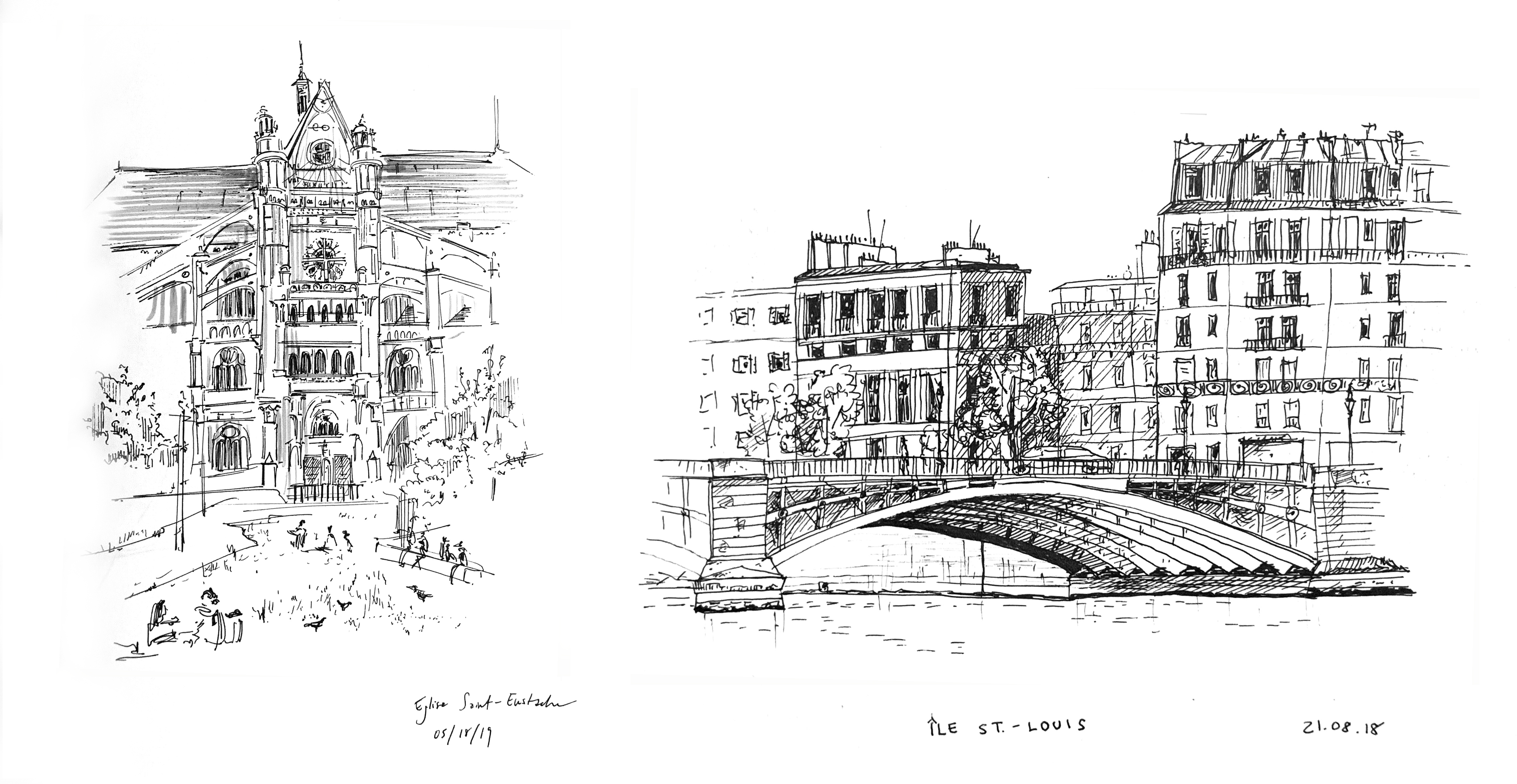
Eglise Saint-Eustache (left) / Michelle and L’île Saint-Louis (right) / Leela
3/ Wandering the streets of Paris, the contemporary flâneuse lives in a referential world. Everything she sees is slightly familiar: streets saturated with déjà vu. Images of Hervé, Marville, and Atget have been replaced by the tourist blog, the Rick Steves guidebook, the countless TV ads. Caillebotte and Monet are seldom seen outside the Musée d’Orsay, except on tote bags. The whirlwind of iconography has embedded itself in the flâneuse’s consciousness, creating a sense of false memory. The photographic “real” has been photoshopped, and the touristic Latin Quarter is a superficial editing of the city, too, with its exhaustion of plastic Eiffel tower keychains.
4/ In the eyes of a tourist, Paris shines like a flipbook of postcards or has the softness of an Impressionist painting. In the steps of a local, history suddenly seems close: I find it in the Van Gogh brothers’ apartment in Montmartre, the writers’ haunts frequented by Hemingway and Fitzgerald, Moreau’s family home, and the streets of the French Revolution. The city seems far from old fashioned, but contemporary with a deep history. You never need landmarks to know it is Paris, as the architecture speaks for itself. The sidewalk seating, pastry displays, passersby with baguettes and paperbacks, let you know it is Paris.
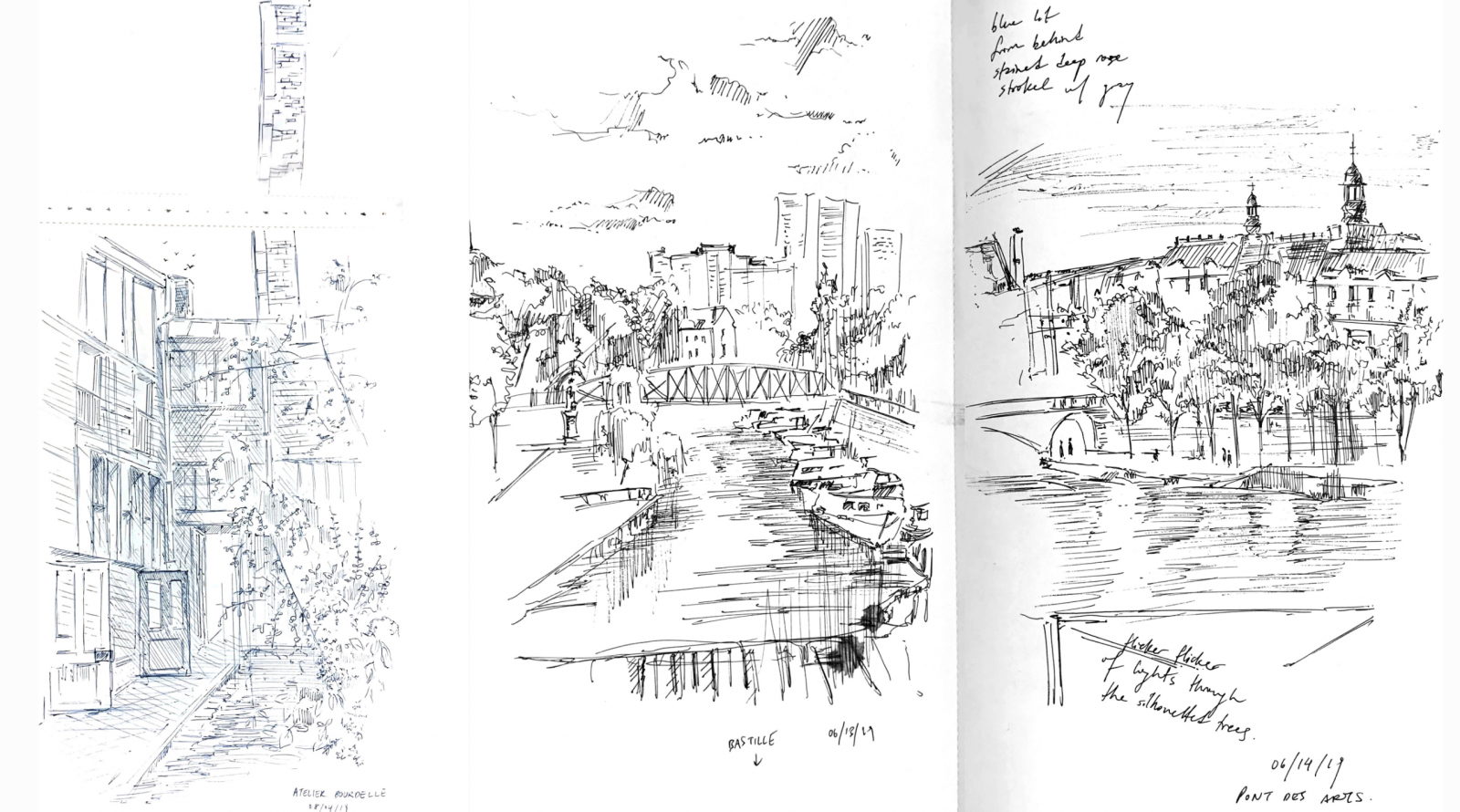
Musee Antoine Bourdelle, Canal Saint-Martin, and Le Pont des Arts / Michelle
5/ You can’t avoid history in Paris. With time, initial superficiality gives way to the city’s deep stratification. Time itself has weight in Paris. In certain places, it has been polished, hidden, or built over, but in others you can feel its presence. Time can be raw, like the feeling of the walls of a medieval church against your cheek. It can be hard to read, made illegible by layers of years. Even so, you can feel it in the twists and turns of the streets, the accumulation of stones. It is this relentless motion of time, like the current of the Seine, that pushes you forward, urging you to keep walking.
Sketching / Note-taking
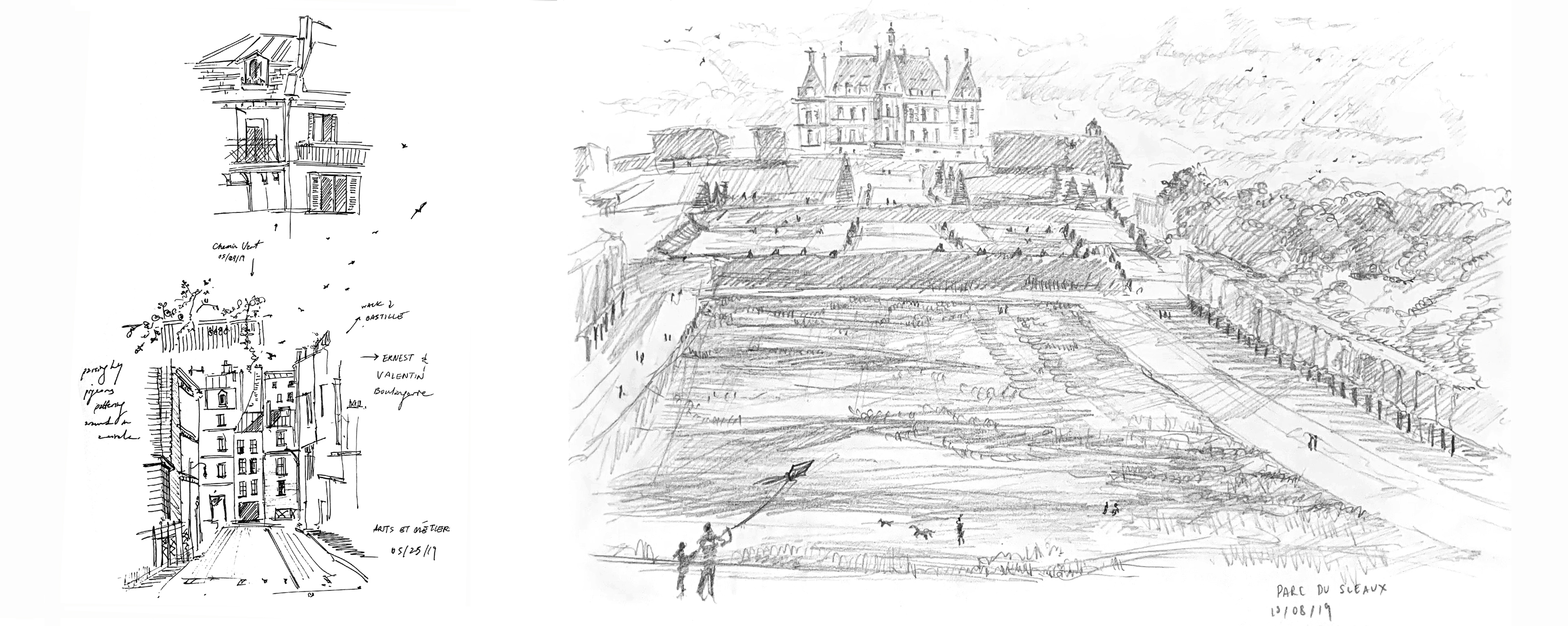
Ernest + Valentin (left) and Parc de Sceaux (right) / Michelle
6/ The sketchbook is an essential tool of the flâneuse. Every page is a record of a journey, an archive of flânerie. Sketching – as opposed to the more formal art of drawing – is a form of note-taking. Each line may be representational, but at the same time it is a statement, or analysis: I drew this, I did not draw that. A sketch can have an ambition, and it can be an experiment. Each place calls for a certain kind of sketch: in an old church, it can be more important to capture the shadows and the dappled light from the stained-glass windows than the detail of the tracery. In this way, each sketch notes certain aspects of a place, and ignores others. Because the flâneuse sketches en route, a sketch can be as quick as a passing observation. She notices something, observes it, and sketches it.
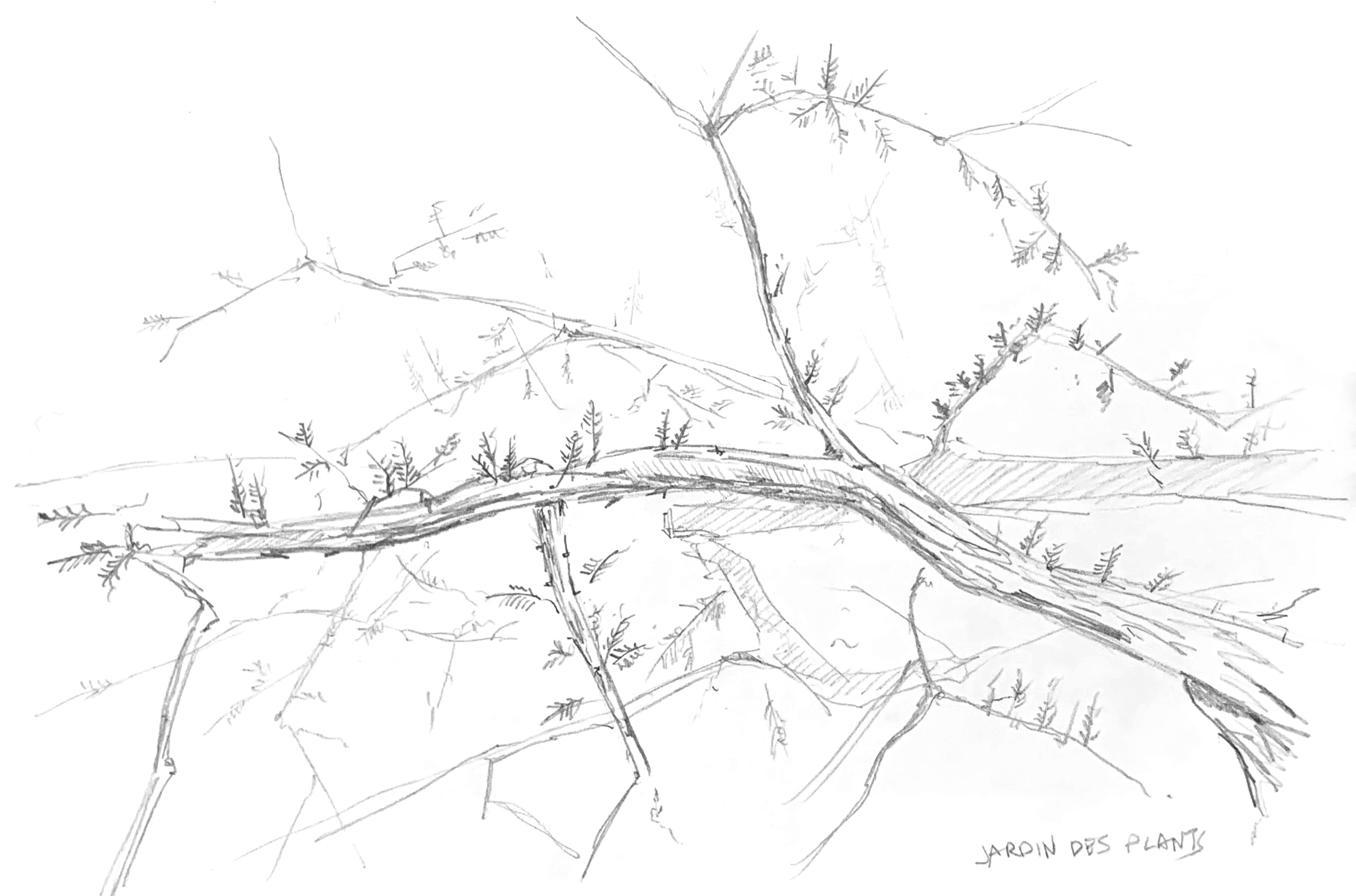
Jardin des Plantes / Michelle
7/ Before starting a sketch, I picture how the drawing might look and how to approach it—should I focus on the texture of the foliage or the stone? Or the contrast between crisp shadows and dappled light? Most of the time, I discover what I want to achieve through the process. I draw the details that interest me first, then the underlying form emerges beneath. I leave the edges vague and unfinished as a suggestion to what extends beyond the paper.
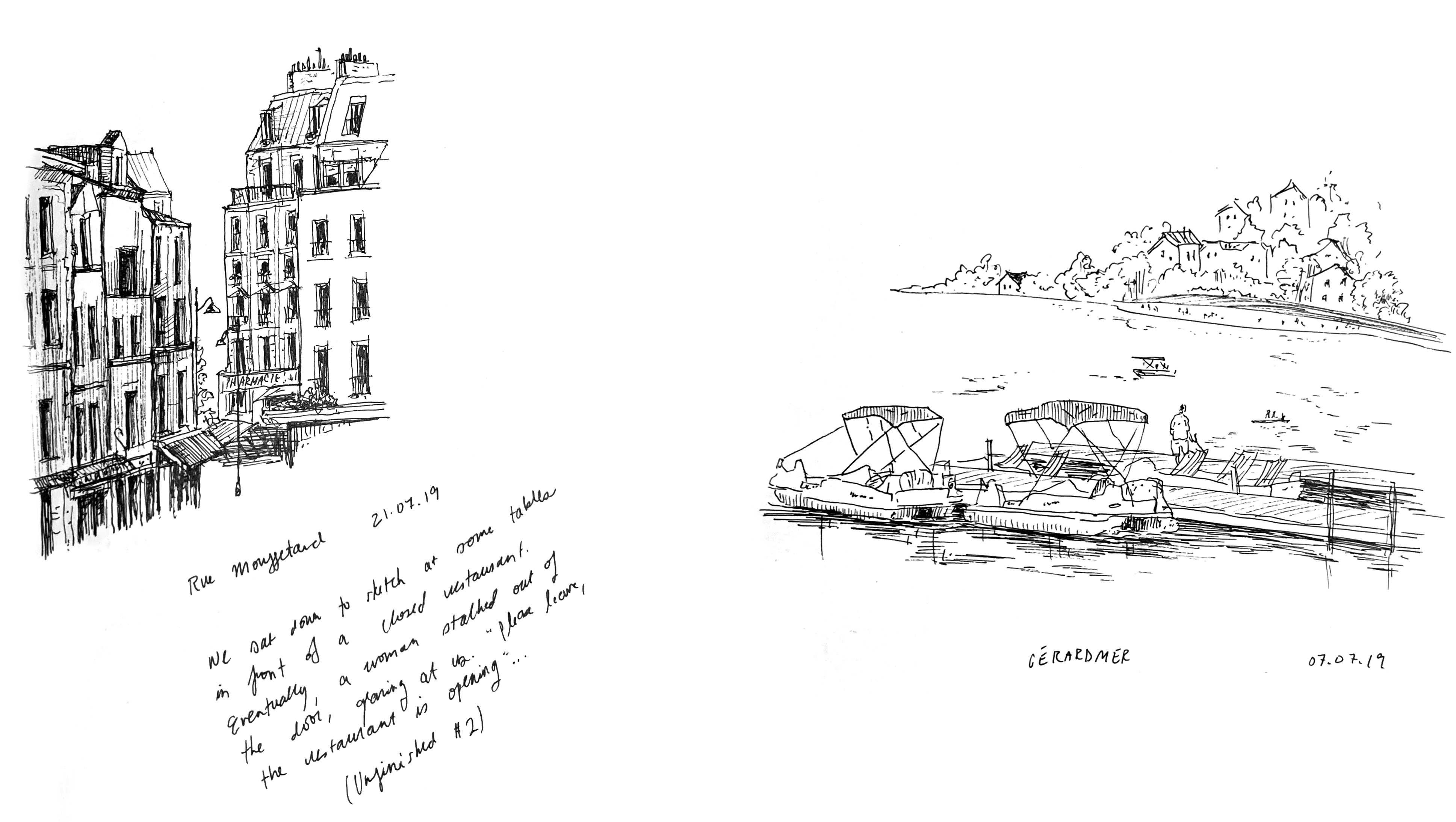
Rue Mouffetard (left) and Gérardmer (right) / Leela
8/ Quick and often unfinished sketches fill most of the pages in our sketchbooks, but that lack of finish gives them a sense of ease that drawings rarely have. They capture a moment of pause. On Rue Mouffetard, I sat in front of a dark restaurant to sketch the street. But before I could draw the storefronts and the people, a woman stepped onto the terrace, scowling, telling me to leave.
9/ We have become adept at visualizing the reality presented in a photograph, switching between dimensions and translating a flat image into a fully sensory environment. Sketches are different. Each sketch tells a story: an altered perception of the world.
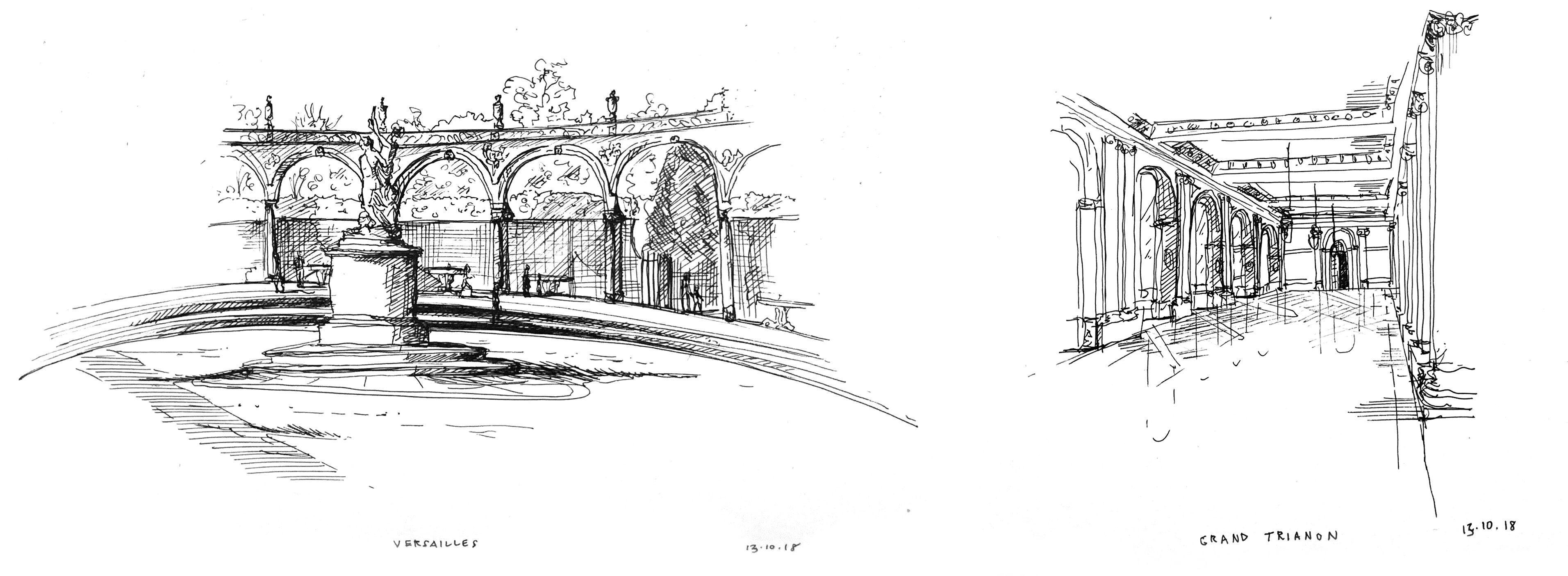
Versailles / Leela
Observing
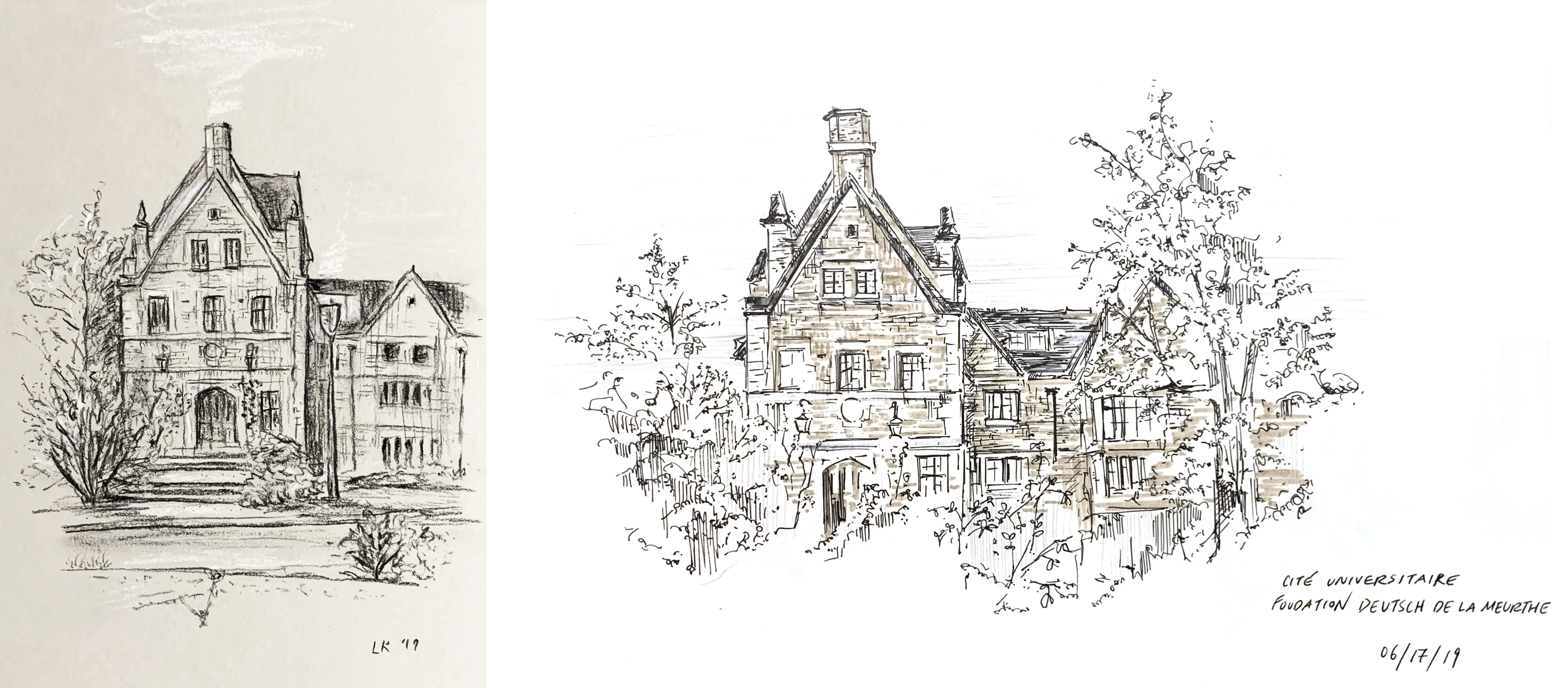
Cité Universitaire / Leela (left) and Michelle (right)
Cité Universitaire. leaving the MEC, turn right at the Inukshuk.
pass under the trellis. at night, the lantern will be lit and you might see the roses.
10/ When we walk into the courtyard of the Fondation Deutsch de la Meurthe, spotlights hidden in the grass cast our shadows against the façade, figures at the scale of giants. We wandered here at dusk from the Maison des Etudiants Canadiens, hopping countries in just a few steps. The MEC is a polite building, and its faded red and green stucco steps aside from the elegance of the Fondation Deutsch. As we’re sketching, both of us remark that we’ve mixed up the proportions. The imperfections of a sketch can be telling, though, as if the lines have been somehow lost in translation between our eyes and our hands, capturing a way of seeing rather than a photographic reality.
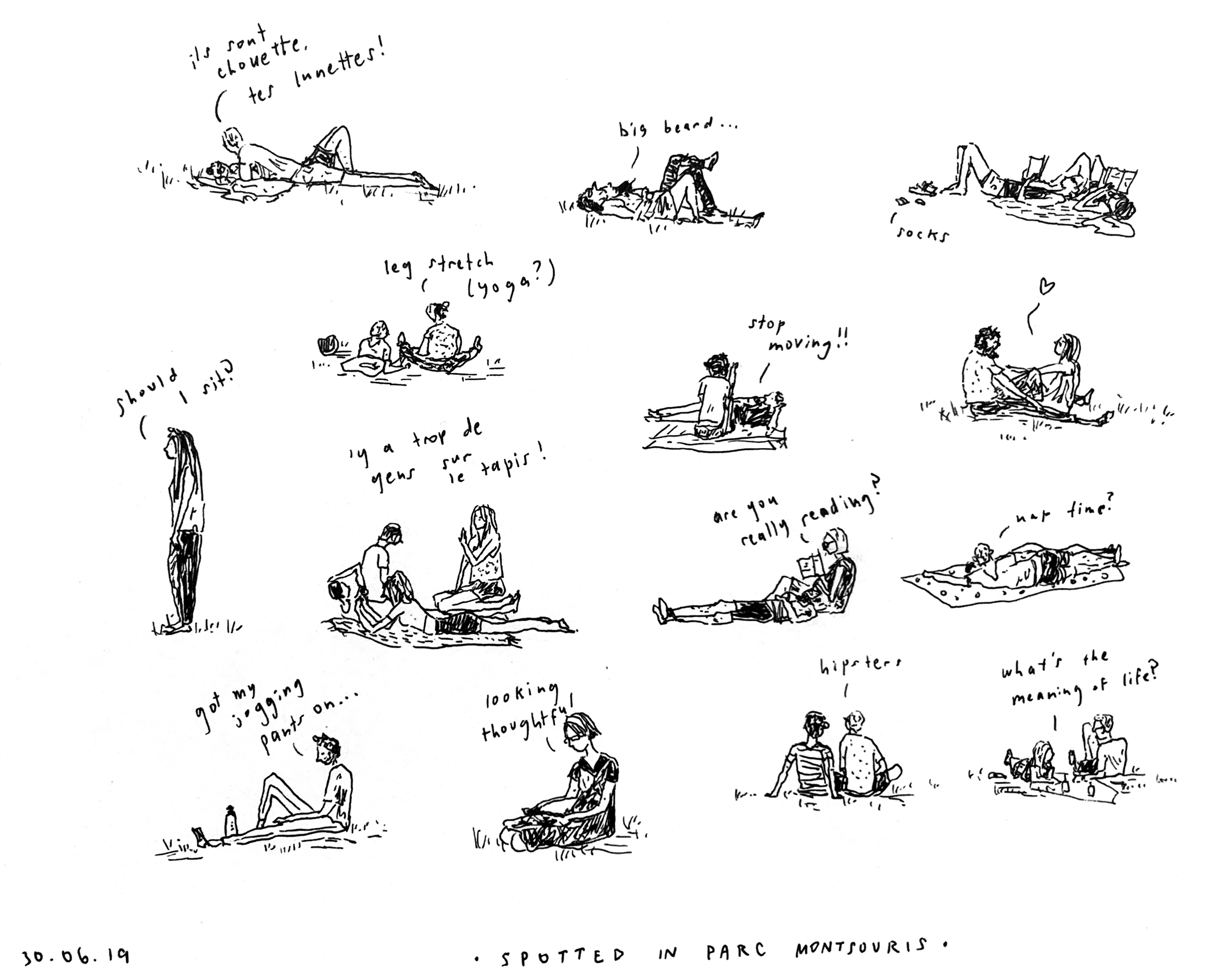
Parc Montsouris / Leela
Parc Montsouris. the tallest trees by the station are cèdre du Liban (there is one inside the Fondation Cartier, also).
these winding paths are picturesque, but go ahead! – walk on the grass (it’s not the Luxembourg Gardens).
11/ So many lazy days spent here.
I remember mornings spent by the pond with either a book or croissant and afternoons lying on the slopes watching shadows and people drift across the grass.
I find Montsouris special: it isn’t as grand or elaborate as most French gardens and parks, but far enough from the city centre and close enough to home that I can return again and again to enjoy a bit of familiarity and intimacy in a city of millions. Its constant presence as seen from the kitchen terrace is a reminder of what is beyond, looking north to the heart of the city.
12/ I’ve never seen the park as crowded as it is this afternoon. Above the piano, people gather on the hill as in an amphitheatre. Sounds of Chopin drift upward. Afterwards, picnics erupt: baguettes, rounds of camembert, peaches ripe to bursting, chaussons aux pommes, champagne. I think of a line from my favourite novel, Brideshead Revisited, when, picnicking as we are, Sebastian remarks, “I should like to bury something precious in every place where I’ve been happy and then, when I was old and ugly and miserable, I could come back and dig it up and remember.” This is summer in Parc Montsouris.
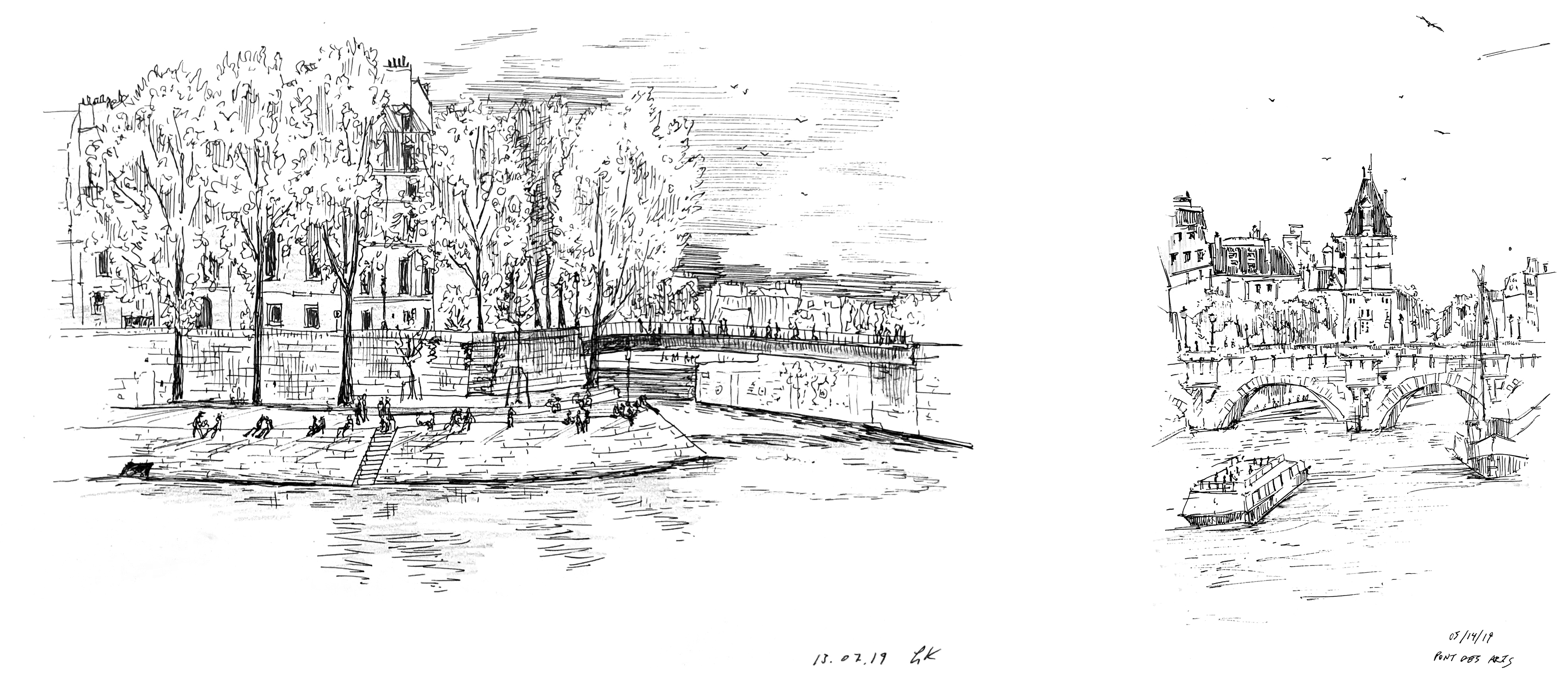
Ile de la Cité / Leela (left) and Michelle (right)
Ile de la Cité. make a detour to cross the Pont des Arts: it’s the most elegant bridge in the city.
the prow of Paris emerges from the Seine, rimmed with picnickers.
13/ It’s difficult to sketch the river, because it keeps changing. Ferries drift under the bridges, people come and go, and the shadows grow long. Water is never easy to capture in pen. When I sit on the Pont des Arts to sketch the Ile de la Cité, a man approaches me. He points to my sketch, his finger a dirty yellow. “No!” he says, then “no!” again. I wonder what I have done wrong, but before I can ask, he has wandered off.
14/ I find it difficult to capture the movement of light in a sketch. Sometimes it is the sweeping shadows of clouds during late afternoon in Parc de Buttes-Chaumont or the pinpricks of moving headlights behind tree trunks from where I sit at dusk on the Pont des Arts.
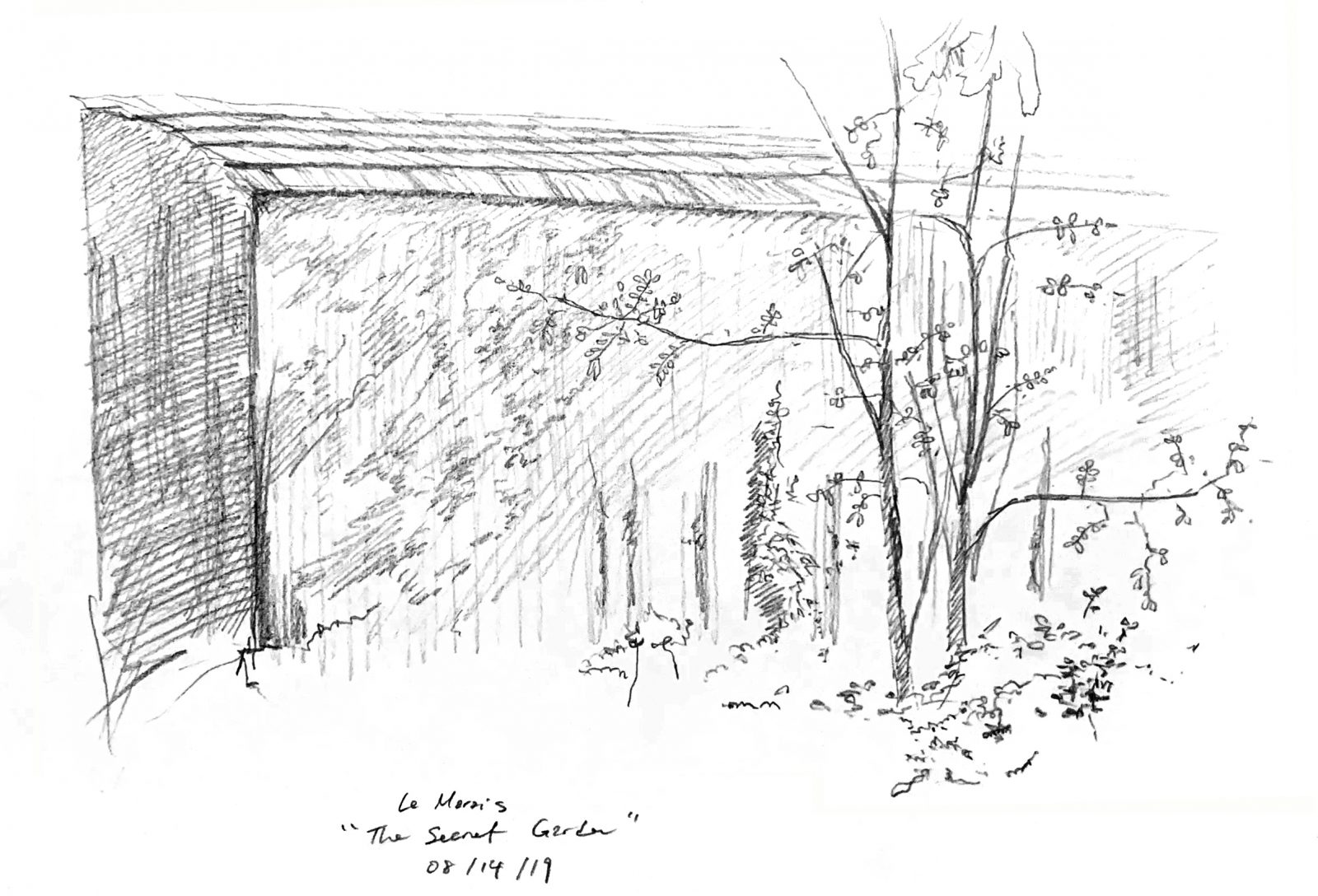
Marais garden wall / Michelle
Marais. find comfort in getting lost.
perhaps you will stumble upon a boulangerie or one of the many parks.
15/ I wander, with or without a direction in mind, and eventually I end up, always, at Châtelet – Les Halles. Or, occasionally, farther north to the grand Place de la Republique. Drawn to this node that leads outwards from the city centre and towards Cité Universitaire, it is both a meeting spot and a point of passage.
I often go to the Secret Garden as it is just steps away from the best falafel place in Paris. Turning left up the street, I enter under the tunnel into the secluded green space. And it keeps going—a passageway leads into another courtyard—so I find a quiet spot and sit as long as I like.
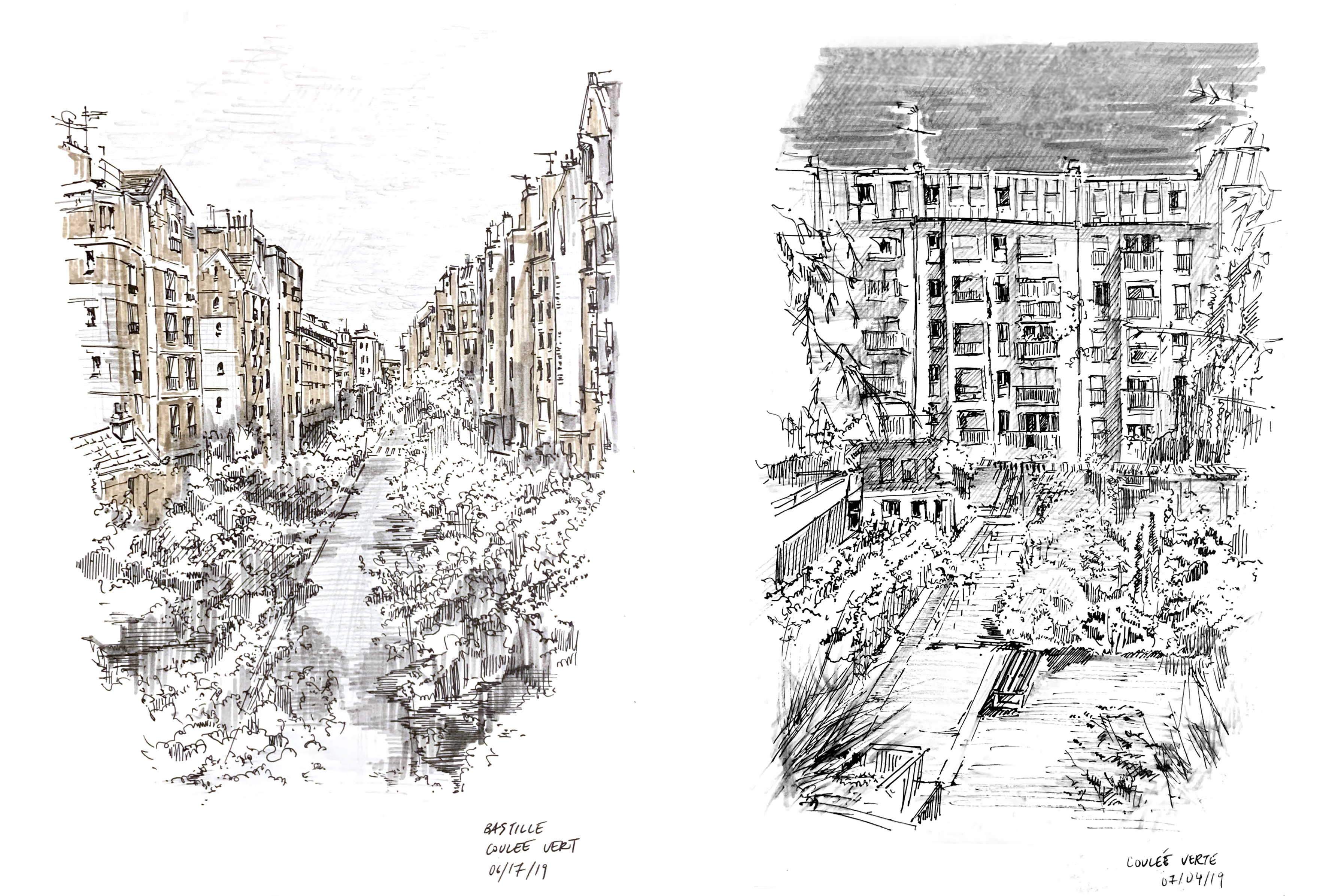
Coulée Verte / Michelle
Coulée Verte. A trellis of roses and a den of bamboo, hovering above the chaos of the street.
another Paris avenue, in the form of a garden.
16/ I take a different route from my office during lunch. Usually I head west to the Place des Vosges or walk up the Rue du Faubourg Saint-Antoine to sit by the canal and people-watch. This time, I turn east, walking down streets named after famous authors and artists, past the market that’s always closed, and in and out of an antique bookstore with leather-bound spines and old museum catalogues. I pick up lunch at the boulangerie on the street corner before I go up the stairs onto the garden trail.
I wonder how far I can walk before I have to turn around. Every time I go a bit further and see something new—a secluded multi-level courtyard, artist workshops in a restored viaduc, a quirky cafe that uses half of a bathtub for a bench.
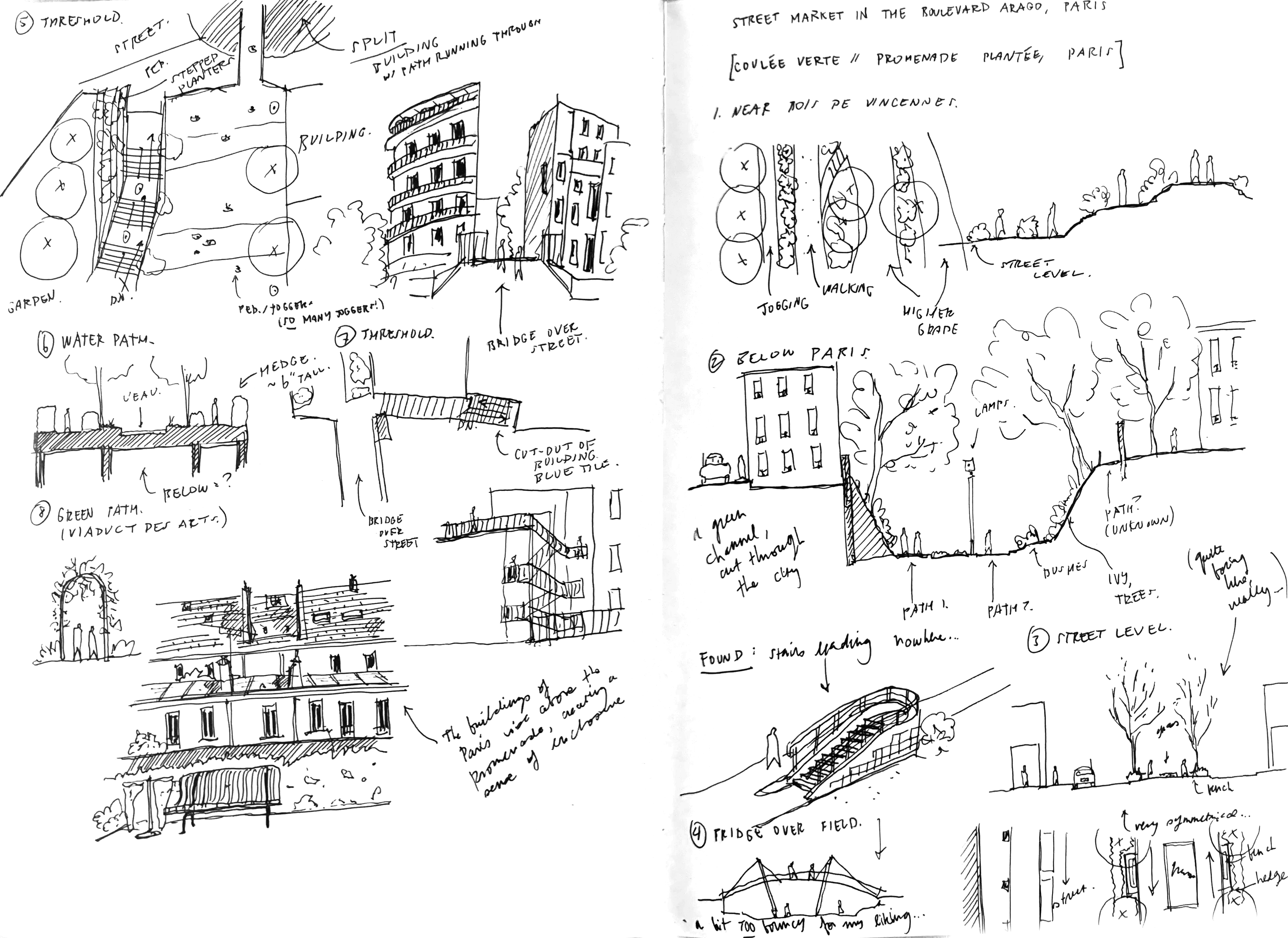
Coulée Verte / Leela
17/ Fascinated by the French version of New York’s High Line, I decide to walk the whole five-kilometre stretch one morning, starting at the Bois de Vincennes. As I stroll, I note down what I see, and fill in what I suppose. The Coulée Verte is older than the High Line, and more variable: I begin on level ground before the paths split and I go down below street level, into a cavern of vines. Further along, I’ve climbed again, and walk between a building, split in half as if in a circus trick. This isn’t polished Diller Scofidio + Renfro or seductive Piet Oudolf, but walking through the channel of green cutting through the city, I feel the story of Paris unfolding before me.
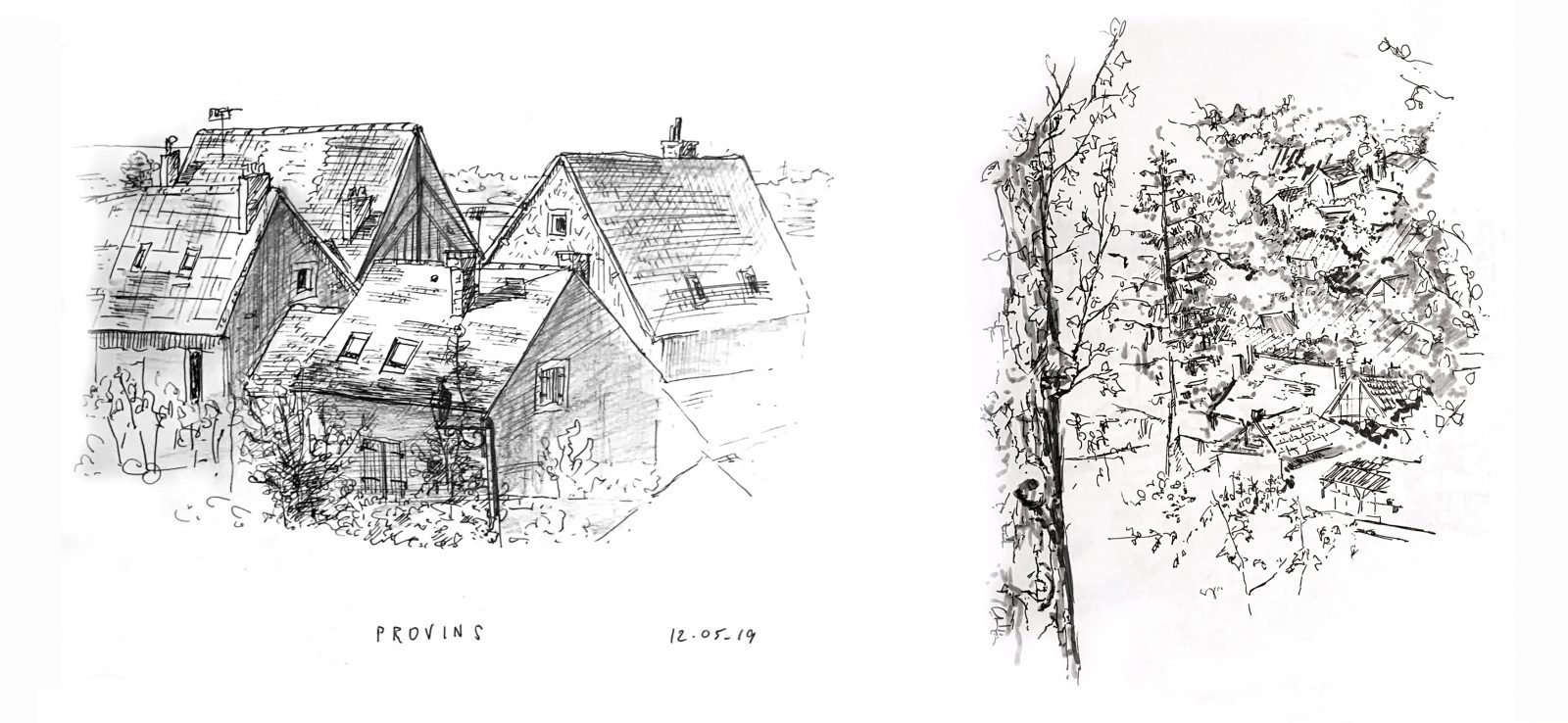
Provins / Leela (left) and Michelle (right)
Provins. in the spirit of flânerie, we wander beyond Parisian density, past the suburban towers, and into the countryside.
here, there are houses in the foliage, stacked like a set of wooden children’s toys.
18/ There is often too much detail in a landscape for a sketch to capture, so I select what stands out to me the most—the knots on a tree trunk, half-hidden roofs peeking out from the greenery, the layering of the foliage. I want to recreate what I see, but in textures and light and the fleetingness of the moment. For a little while, I hold the memory in my hands, before I tuck it into my bag and go on my way.

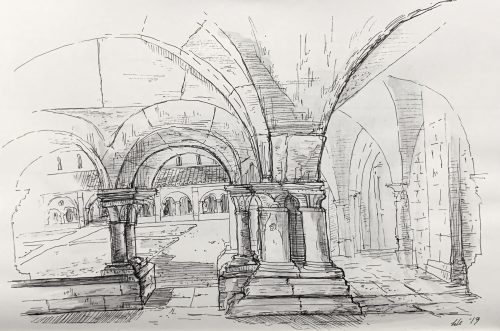
Abbaye de Fontenay / Michelle (top) and Leela (bottom)
Abbaye de Fontenay. when you come from Montbard by foot, it’s a pilgrimage.
don’t speak, but listen. listen to the stones.
19/ While sketching in the Abbaye de Fontenay, I wonder why we rarely build vaults any more. I can’t think of a more beautifully expressive element. My pen traces ancient stones and I’d like to stay forever. Here, maybe I understand something important about architecture. I can see why John Pawson found his greatest inspiration in Fontenay’s sister Cistercian Abbey of Le Thoronet. In mass, I feel the passage of time; in light, I feel the timelessness of form.
20/ Our first Sunday in Paris, we come across the Mad Hatter’s Tea Party in Shakespeare and Company. In a sunlit room, the walls are books and the flow of people follows the flow of the Seine. The hostess, after a lengthy self-introduction, asks us—travelers, readers, tumbleweeds, and poets alike— “What is culture?” She answers herself: “it’s reading and walking.”
An apt comment for a bookstore, but after spending months doing these two things in the city, the list feels incomplete. What does it mean to read the city, drifting between drawing and wandering, the imagined and reality and its memory? What does culture mean to us, in Paris? Perhaps it’s reading, walking, and sketching.


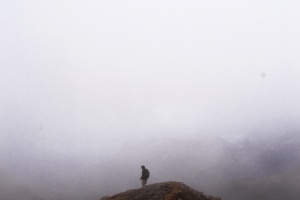
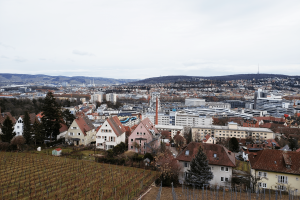
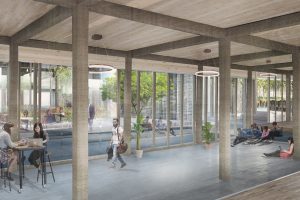
Leave a Reply